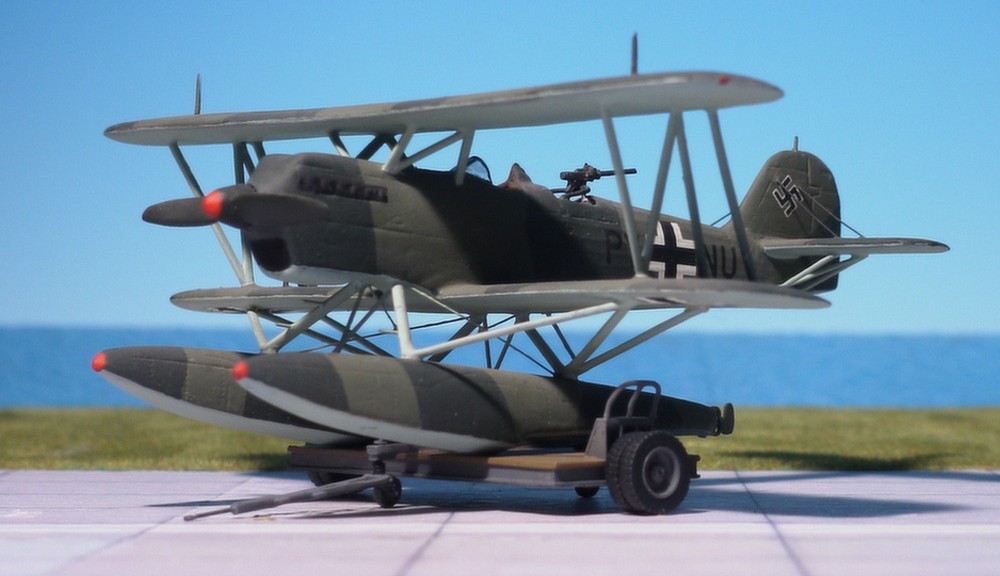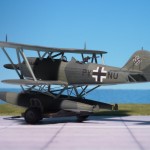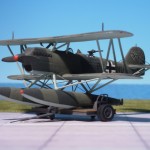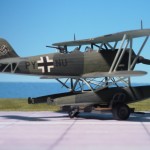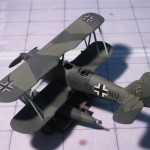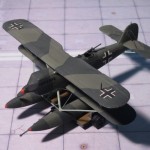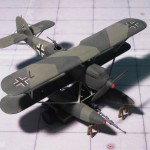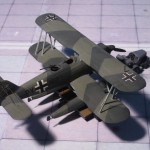TYPE: Reconnaissance floatplane
ACCOMMODATION: Pilot and observer
POWER PLANT: One BMW VI 6.0 liquid-cooled engine, rated at 660 hp
PERFORMANCE: 150 mph at sea level
COMMENT: The Heinkel He 60 was a reconnaissance floatplane designed for the German Kriegsmarine (German Navy) to be catapulted from warships of the 1930s.
The Heinkel He 60 was designed as a single-engined biplane of mixed wood and metal construction with fabric covering. Its single bay wings were of equal-span and had significant stagger.
The first prototype flew early in 1933 and proved to be underpowered with its 660 hp BMW VI engine. The second prototype had a more powerful version of the BMW engine, but this only marginally improved its performance and was unreliable, so production aircraft reverted to the original engine. Of conventional configuration, the He 60 was a sturdy aircraft, designed to be capable of operating on the open sea. As a result, it was always somewhat underpowered for its weight, which made handling sluggish and the aircraft vulnerable to enemy fire. Attempts were made to solve its lack of power by fitting one aircraft with a Daimler-Benz DB 600 engine, but engines were not available for production.
Initial deliveries of the He 60 were to Kriegsmarine training units in June 1933. From 1934, the major production version, the He 60C began to be delivered to the shipboard floatplane units of the Kriegsmarine, operating from the catapults of all German cruisers. It also saw action with Spanish Nationalist forces during the Civil War.
In 1939 it was replaced as a shipboard aircraft first by the Heinkel he 114 in service, then soon after by the Arado Ar 196, but it remained in service with several coast reconnaissance Staffeln (squadrons) when WW II began. It had been withdrawn from front-line service by 1940, but returned to use following Germany’s invasion of the Soviet Union in 1941, being used for coastal patrol work in the Baltic and Mediterranean Seas. All He 60s were removed from service by October 1943 (Ref.: 24).
